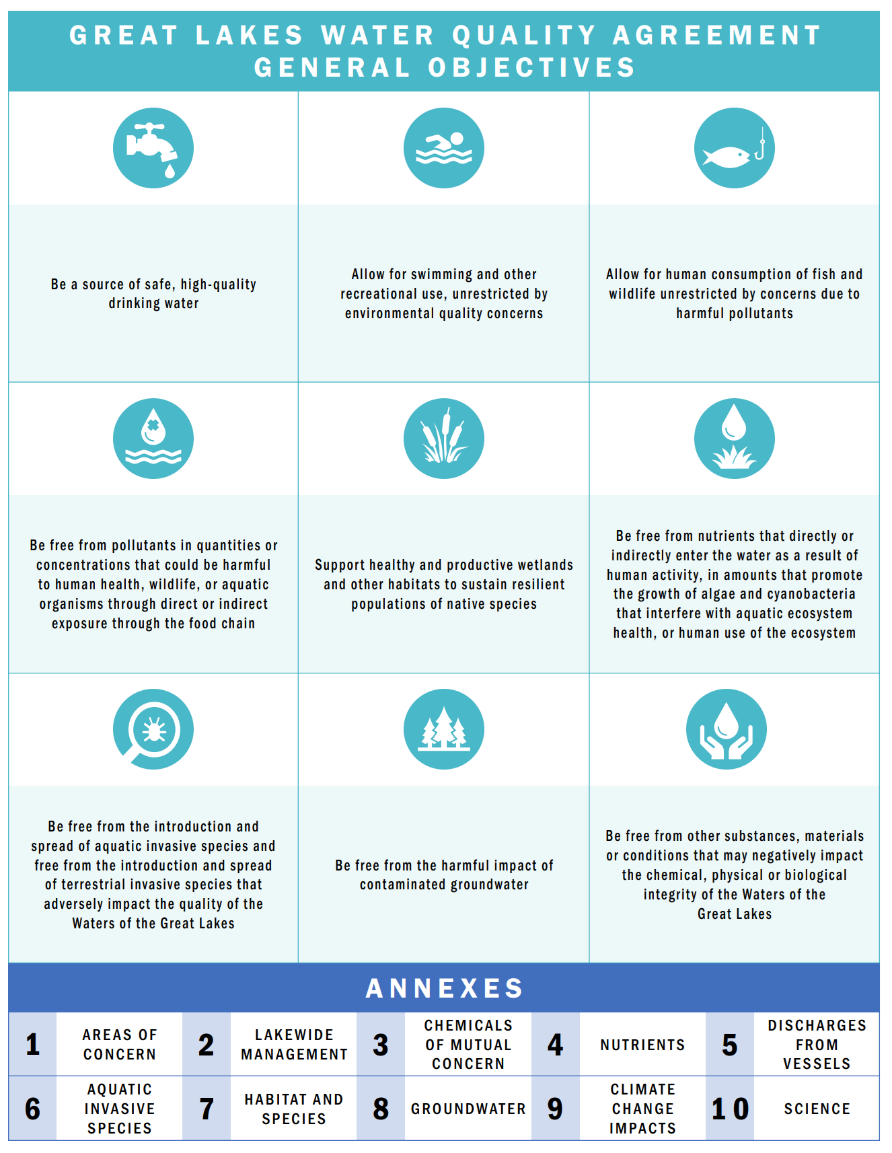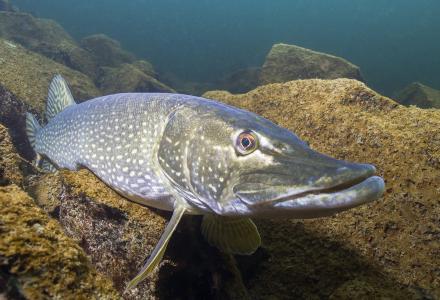
(UPDATE: The State of the Great Lakes 2022 Report and 2022 Progress Report of the Parties were released on July 29)
Ninety percent of Great Lakes residents agree that the health and water quality of the Great Lakes are important to protect, according to a 2021 Great Lakes Water Quality Board regional poll. But who’s in charge of protecting Great Lakes water quality and are they making progress?
Only 17 percent of residents have heard of the Great Lakes Water Quality Agreement (GLWQA), according to the poll. While not widely known, the GLWQA is an important framework for cooperation between the Canadian and United States governments (the “Parties”) that outlines commitments and responsibilities to restore, protect and enhance the water quality of the Great Lakes. The GLWQA sets general and specific objectives for Great Lakes water quality and says the Parties “shall progress toward the attainment of these” objectives through their respective domestic programs.
To monitor the Parties’ progress fulfilling the GLWQA objectives, the IJC serves as a binational third party and prepares a Triennial Assessment of Progress (TAP) report every three years. The TAP documents the progress of government programs and activities toward achieving the nine general objectives of the GLWQA and provides recommendations to the Canadian and US governments.

The GLWQA’s nine general objectives, supported by 10 annexes, that the IJC uses to document Canadian and US government progress to protect and restore the Great Lakes. Graphic from the IJC’s 2020 TAP report
The last TAP report, which came out in 2020, documented progress achieved between 2017 to 2019. The IJC’s next TAP report, to be released in 2023, will assess the three-year period between 2020 and 2022.
Before the IJC issues its final report, it needs to take account of the governments’ work. Every three years, the governments of Canada and the United States issue a pair of reports—the Progress Report of the Parties (PROP) and the State of the Great Lakes Report (SOGL). These two reports provide the basis of IJC’s evaluation.
Just as the name suggests, the SOGL report details the present ecological state of each of the Great Lakes. The SOGL technical report provides a detailed analysis of more than 40 ecosystem indicators to describe basinwide and lake-specific conditions for each general objective of the GLWQA. These indicators are rolled into an overall assessment of the Great Lakes as a whole, and each lake’s ecosystem health status (good, fair, poor or undetermined) and trend (improving, unchanging, deteriorating or undetermined). However, the governments’ assessment of the state of each lake summarizes a wide range of variability across vast and diverse lake basins.
But what ultimately moves the needle to improve the lakes’ ecosystem health are programs, policies and actions that federal governments undertake across the basin. This includes involvement and participation by states, provinces, municipal governments, First Nations, Métis and Tribal governments, watershed management agencies, local public agencies and the public.
The PROP is a summary of those programs, policies and actions completed in the last three years, domestically and binationally. The PROP describes government-led activities based on the GLWQA’s 10 annexes, highlighting key achievements and identifying new science and action priorities for governments to complete over the next three years.
Working with its advisory boards on Great Lakes water quality policy, science and health, the IJC reviews the PROP and assesses the extent to which government programs are achieving objectives of the GLWQA.
While the governments of Canada and the United States self-report on their actions, the IJC’s triennial assessment acts as a third-party review.
However, the IJC and its expert advisory boards are not the only ones that provide input to the TAP report. An essential part of the IJC’s assessment responsibilities is gathering and summarizing public input on the governments’ progress toward improving the health of the Great Lakes.
You can tap in to the TAP. Later this year, the IJC will host a series of engagement activities, including in-person and virtual public engagement sessions, Indigenous listening sessions and engagement opportunities in conjunction with the Canadian and US governments’ 2022 Great Lakes Public Forum in Niagara Falls, Ontario.
There also will be a survey this fall where you can share your thoughts and provide input on the Canadian and US governments’ progress toward achieving the water quality objectives in the Great Lakes Water Quality Agreement.
In the coming weeks, the Canadian and US governments will publish the 2022 Progress Report of the Parties and State of the Great Lakes reports to binational.net. We encourage you to read the reports when available and prepare your feedback for us.
Stay tuned to IJC.org and the Great Lakes Connection newsletter for upcoming information on engagement activities, the survey and other opportunities to comment. We want to hear from you.
(UPDATE: The State of the Great Lakes 2022 Report and 2022 Progress Report of the Parties were released on July 29)

Rachel Wyatt is the communications officer at the IJC’s Great Lakes Regional Office.



